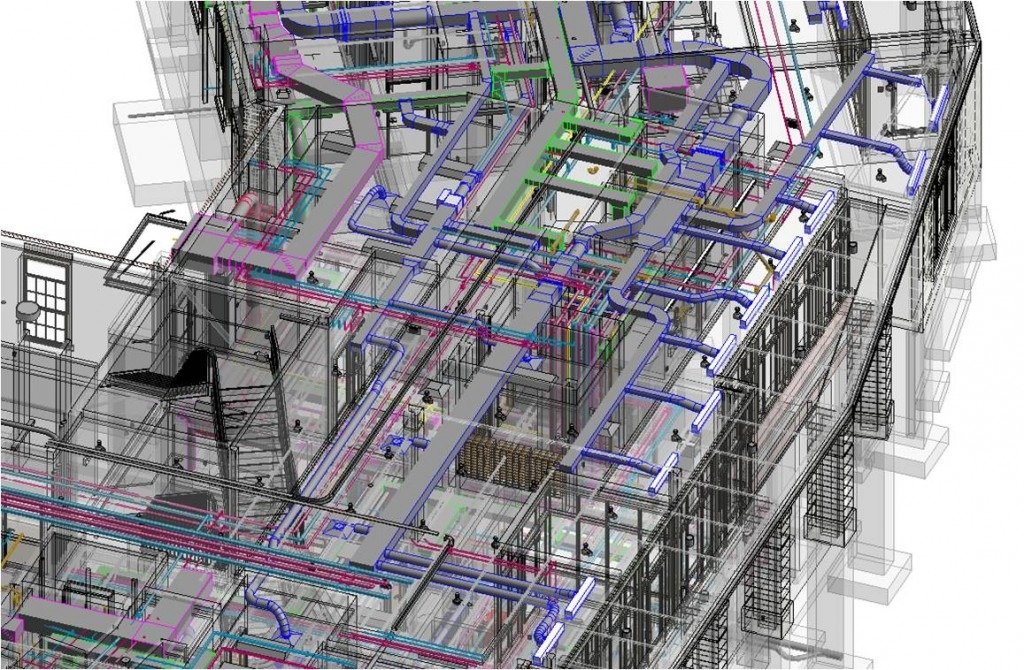The Future Of Bim Design Model
As the construction industry continues to evolve, so does the way we design and construct buildings. One of the most significant advancements in recent years has been the adoption of Building Information Modelling (BIM) as a design tool. BIM has transformed the way architects, engineers, and contractors collaborate, enabling them to create more efficient, sustainable, and cost-effective buildings.
However, as technology evolves, the future of BIM design models is becoming increasingly exciting. From artificial intelligence to augmented reality, there are many emerging technologies that could shape the future of BIM. In this article, we will explore some of the latest trends and developments in BIM and discuss what the future of BIM design models could look like.
The Future of Bim Design Model
Building Information Modeling (BIM) is a design model that has taken the construction industry by storm. It has been around for a while, but its adoption rate is increasing rapidly. BIM is a 3D modeling technology that allows architects, engineers, and contractors to collaborate on a project in real-time. It has revolutionized the way buildings are designed, constructed, and operated. In this article, we will discuss the future of BIM design model and how it will shape the construction industry.

1. Integration with IoT
BIM design model has already established itself as a vital tool for managing construction projects. However, the future of BIM design model will see its integration with the Internet of Things (IoT) devices. This integration will allow the collection and analysis of real-time data from sensors embedded in the building.
The BIM model will enable the creation of a smart building that can adjust its lighting, heating, and ventilation based on the occupants’ behavior and preferences. The integration of BIM with IoT will also enable predictive maintenance, which will help identify potential equipment failures before they occur.
2. Increased Use of Augmented Reality
The future of BIM design model will also see an increased use of augmented reality (AR) technology. AR technology will allow architects and engineers to visualize the building in real-time and make changes to the design as needed. This will make the design process more efficient and reduce the need for expensive physical mock-ups.
AR technology will also enable contractors to visualize the construction process and identify potential problems before they occur. This will reduce the likelihood of errors and delays during the construction process.
3. Improved Collaboration
One of the biggest advantages of BIM design model is its ability to facilitate collaboration between different stakeholders in a construction project. The future of BIM design model will see an improvement in collaboration through the use of cloud-based systems.
Cloud-based systems will allow project stakeholders to access the BIM model from anywhere in the world, at any time. This will enable architects, engineers, and contractors to collaborate more efficiently, even if they are in different locations.
4. Increased Automation
The future of BIM design model will also see an increased level of automation. BIM design model will enable the automation of repetitive tasks, such as material take-offs and cost estimations.
Automation will reduce the time and effort required to complete these tasks, allowing architects, engineers, and contractors to focus on more critical aspects of the project.
5. Improved Safety
BIM design model has already been proven to improve safety on construction sites. The future of BIM design model will see an increased use of safety features within the BIM model.
Safety features will include the identification of potential hazards and the simulation of safety measures within the BIM model. This will enable contractors to identify potential safety issues before they occur and take measures to prevent them.
6. Sustainable Design
Sustainable design is becoming increasingly important in the construction industry. The future of BIM design model will see an increased focus on sustainable design.
BIM design model will enable architects and engineers to model the building’s energy consumption and identify areas where energy can be saved. This will enable the creation of more energy-efficient buildings that are better for the environment and more cost-effective for the building owner.
7. Improved Cost Control
One of the biggest challenges in construction projects is cost control. The future of BIM design model will see an improvement in cost control through the use of real-time data.
BIM design model will enable project stakeholders to access real-time data on the project’s progress, costs, and schedule. This will enable contractors to identify potential cost overruns and take measures to prevent them.
8. Improved Building Operation
BIM design model will also improve building operation. BIM design model will enable the creation of a digital twin of the building, which will allow building owners to monitor the building’s performance in real-time.
The digital twin will enable building owners to identify potential maintenance issues before they occur and take measures to prevent them. This will reduce the likelihood of equipment failures and improve the building’s overall performance.
9. Improved Quality Control
BIM design model will also improve quality control. BIM design model will enable project stakeholders to identify potential quality issues before they occur and take measures to prevent them.
BIM design model will also enable the creation of a detailed construction plan, which will ensure that all contractors are working to the same specifications. This will reduce the likelihood of errors and improve the overall quality of the project.
10. Improved Building Lifecycle Management
BIM design model will also improve building lifecycle management. BIM design model will enable the creation of a digital record of the building, which will include information on the building’s design, construction, and operation.
This digital record will enable building owners to manage the building’s lifecycle more efficiently. The digital record will also enable building owners to make informed decisions about the building’s maintenance and renovation needs.
In conclusion, the future of BIM design model is bright. The integration of BIM with IoT, increased use of AR, improved collaboration, increased automation, improved safety, sustainable design, improved cost control, improved building operation, improved quality control, and improved building lifecycle management will shape the construction industry for years to come.
Frequently Asked Questions
What is the BIM Design Model?
The BIM Design Model is a 3D digital representation of a building that includes information about its geometry, materials, and other physical characteristics. This model is used by architects, engineers, and construction professionals to design and build structures more efficiently and accurately than with traditional 2D drawings.
The BIM Design Model also allows for better collaboration between all parties involved in the building process, as changes can be made and shared in real-time, reducing the risk of errors and delays.
How is BIM changing the construction industry?
BIM is changing the construction industry by streamlining the design and construction process, reducing errors and costs, and increasing efficiency and productivity. With BIM, all stakeholders have access to a detailed, accurate, and up-to-date model of the building, which can be used to identify and resolve issues before construction begins.
BIM also allows for better communication and collaboration between architects, engineers, construction professionals, and owners, resulting in better project outcomes and higher levels of client satisfaction.
What are the benefits of using BIM in construction?
The benefits of using BIM in construction are numerous, including improved accuracy and efficiency, reduced costs and errors, and increased collaboration and communication between all parties involved in the building process. BIM also allows for better visualization of the building, which can help stakeholders make informed decisions about design, materials, and construction methods.
Other benefits of using BIM in construction include improved safety and quality, reduced environmental impact, and the ability to easily track and manage changes throughout the project lifecycle.
What is the future of BIM Design Model?
The future of BIM Design Model is bright, with continued advancements in technology and software leading to even more efficient, accurate, and collaborative design and construction processes. As the adoption of BIM becomes more widespread, we can expect to see more standardization and integration with other building systems and processes.
BIM also has the potential to be used in other areas, such as facility management and maintenance, and can be applied to other industries beyond construction, such as manufacturing and product design.
What are the challenges of implementing BIM in construction?
While the benefits of using BIM in construction are clear, there are also challenges associated with its implementation. These include the need for specialized software and hardware, the cost of training and education, and the need for standardization and interoperability between different systems and stakeholders.
Other challenges of implementing BIM in construction include the need for clear protocols and standards for data sharing and management, and the need for a cultural shift within the industry towards a more collaborative and integrated approach to building design and construction.
In conclusion, the future of BIM design model looks promising. With the advancements in technology and the increasing demand for sustainable and efficient construction practices, BIM will continue to play a crucial role in the construction industry.
One of the most significant advantages of BIM is its ability to enhance collaboration and communication among project stakeholders. This will ultimately lead to better decision-making, fewer errors, and reduced costs.
Moreover, the integration of artificial intelligence and machine learning into BIM will enable the creation of more complex and accurate models, leading to better project outcomes. As the construction industry continues to evolve, BIM will undoubtedly play an essential role in shaping its future.

Leave a Reply